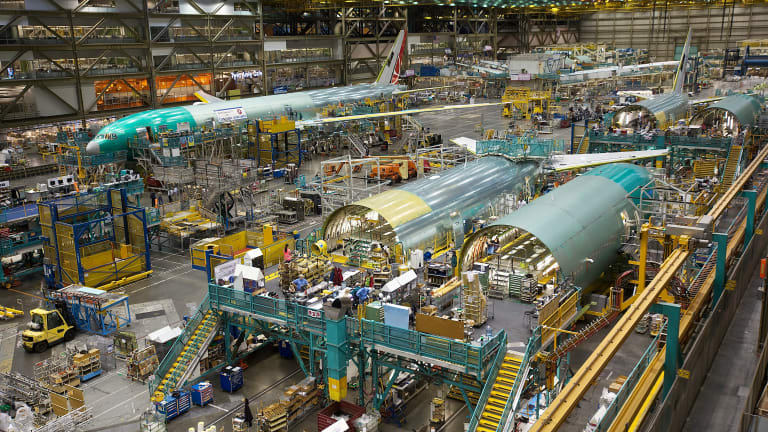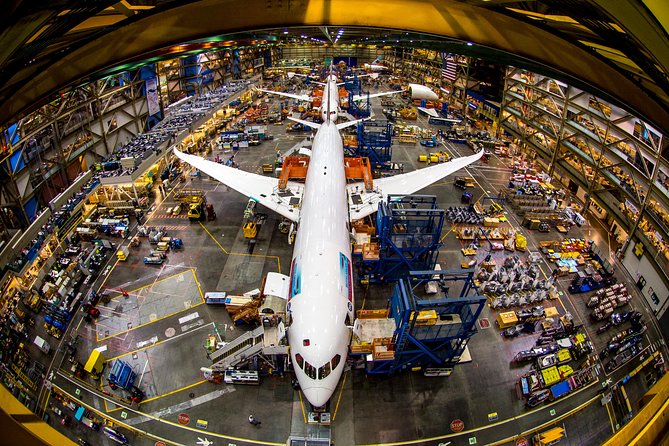
At Boeing Factory
Global airline manufacturer, Boeing has estimated that intra-regional and domestic networks across the African continent will grow with a robust 6,1% compound annual growth rate, driving twenty-year demand for 1,010 new airplanes by 2040 valued at $176 billion.
Boeing 2022 Commercial Market Outlook (CMO) data released this September shows that with Europe remaining the most prominent origin destination for African carriers, overall African air traffic growth is forecast at 5.2%, the third highest among global regions.
The outlook shows that African aviation traffic has recovered at a strong pace in 2022 with pent-up demand and economic growth driven by higher global commodity prices allowing African airlines to recover their flight operations to 80% of pre-pandemic levels.

Africa’s above world average annual economic growth of 3.1%, combined with increasing rates of urbanization and a growing middle class population will continue to be the drivers for Africa’s long-term traffic demand, according to Boeing.
Initiatives such as the African Continental Free Trade Area (AfCTA) and Single African Air Transport Market are expected to further stimulate trade and intra-regional connectivity.
“African carriers are well-positioned to support inter-regional traffic growth and capture market share by offering services that efficiently connect passengers and enable commerce within the continent,” said Randy Heisey, Boeing managing director of Commercial Marketing for Middle East and Africa.
“We forecast an increase in the average aircraft size and seats per aircraft for the African fleet, as mid-size, single aisles, like the Boeing 737 MAX, will be the most in demand for the continent.”
AfCFTA
Africa has a market of 1.3 billion consumers with a total Gross Domestic Product (GDP) of more than $2.6 trillion and $80billion in intra-Africa exports.

The World Bank predicted economic benefits of full AfCFTA implementation by 2035 to a 7% real income gain ($450 billion), 29% increase in volume of exports, and 81% increase in intra-African trade, lifting over 60 million from poverty.
The first phase of the AfCFTA was supposed to see implementation of trade in goods and services, setting rules and procedures on the settlement of disputes, tariff concessions, specific commitments for trade in services, and rules of origin.
The 1st AfCFTA coordination meeting of the Heads of Regional Economic Communities on the implementation of the deal was held in September 2021, in Accra-Ghana- where a joint position paper on the implementation road map for the private sector and how it should be considered in the AfCFTA implementation process was tabled.
To move from paperwork to action, the East and Southern Regional tripartite met in Kigali from 10th – 11th August, 2022 and recognized the importance of the role of private sectors in implementing the deal and came up with strong recommendations on how to move forward.
These include having an Action Plan for Collaboration between the RECs Business Councils on capacity building of the private sector to participate in the AfCFTA initiatives, create a joint coordination on the sensitization of the private sector to benefit from the opportunities, and establishing engagement mechanisms.

